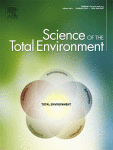Ver ítem
- xmlui.general.dspace_homeCentros Regionales y EEAsCentro Regional Entre RíosEEA ParanáArtículos científicosxmlui.ArtifactBrowser.ItemViewer.trail
- Inicio
- Centros Regionales y EEAs
- Centro Regional Entre Ríos
- EEA Paraná
- Artículos científicos
- Ver ítem
Oral acute toxicity of imidacloprid, thiamethoxam and clothianidin in eared doves: a contribution for the risk assessment of neonicotinoids in birds
Resumen
Neonicotinoids have recently been demonstrated to cause direct negative impacts on birds from North America
and Europe. To further understand the impact of these compounds on bird species and to improve risk assessment
capacities, the current study determined the acute toxicities of imidacloprid, clothianidin, and
thiamethoxam formulations on South American eared doves (Zenaida auriculata). Insecticides were administered
by gavage to adult doves to
[ver mas...]
Neonicotinoids have recently been demonstrated to cause direct negative impacts on birds from North America
and Europe. To further understand the impact of these compounds on bird species and to improve risk assessment
capacities, the current study determined the acute toxicities of imidacloprid, clothianidin, and
thiamethoxam formulations on South American eared doves (Zenaida auriculata). Insecticides were administered
by gavage to adult doves to determine median lethal doses (LD50) according to a standardized sequential
procedure. The acute toxicity of formulated imidacloprid (LD50=59mgactive ingredient, a.i./kg bodyweight, b.
w.) was much higher than that of the tested formulations of clothianidin (LD50 = 4248 mg a.i./kg b.w.) and
thiamethoxam (LD50 = 4366 mg a.i./kg b.w.). Imidacloprid also differed from the other two neonicotinoids in
terms of the onset and intensity of intoxication signs and the times of death and recovery. All three insecticides
induced a reduction in food consumption that led to body weight loss. An average weight dove of 127 g would
obtain a dose equivalent to the LD50 of imidacloprid by consuming 1.7 g of treated sorghum seeds. As eared
doves offered non-treated sorghum seeds 5 h per day consumed on average 6.4±1.8 g (mean±S.D.), it is concluded
that these doves could feasibly be exposed to lethal doses in the field. Thiswork is the first to describe intoxication
signs and report oral neonicotinoid LD50s in a wild South-American bird species.
[Cerrar]

Autor
Addy Orduna, Laura;
Brodeur, Celine Marie Julie;
Mateo Soria, Rafael;
Fuente
Science of the total environment 650 (Part 1) : 1216-1223. (10 February 2019)
Fecha
2018-09-10
Editorial
Elsevier
ISSN
0048-9697
Formato
pdf
Tipo de documento
artículo
Palabras Claves
Derechos de acceso
Restringido
 Excepto donde se diga explicitamente, este item se publica bajo la siguiente descripción: Creative Commons Attribution-NonCommercial-ShareAlike 2.5 Unported (CC BY-NC-SA 2.5)
Excepto donde se diga explicitamente, este item se publica bajo la siguiente descripción: Creative Commons Attribution-NonCommercial-ShareAlike 2.5 Unported (CC BY-NC-SA 2.5)

